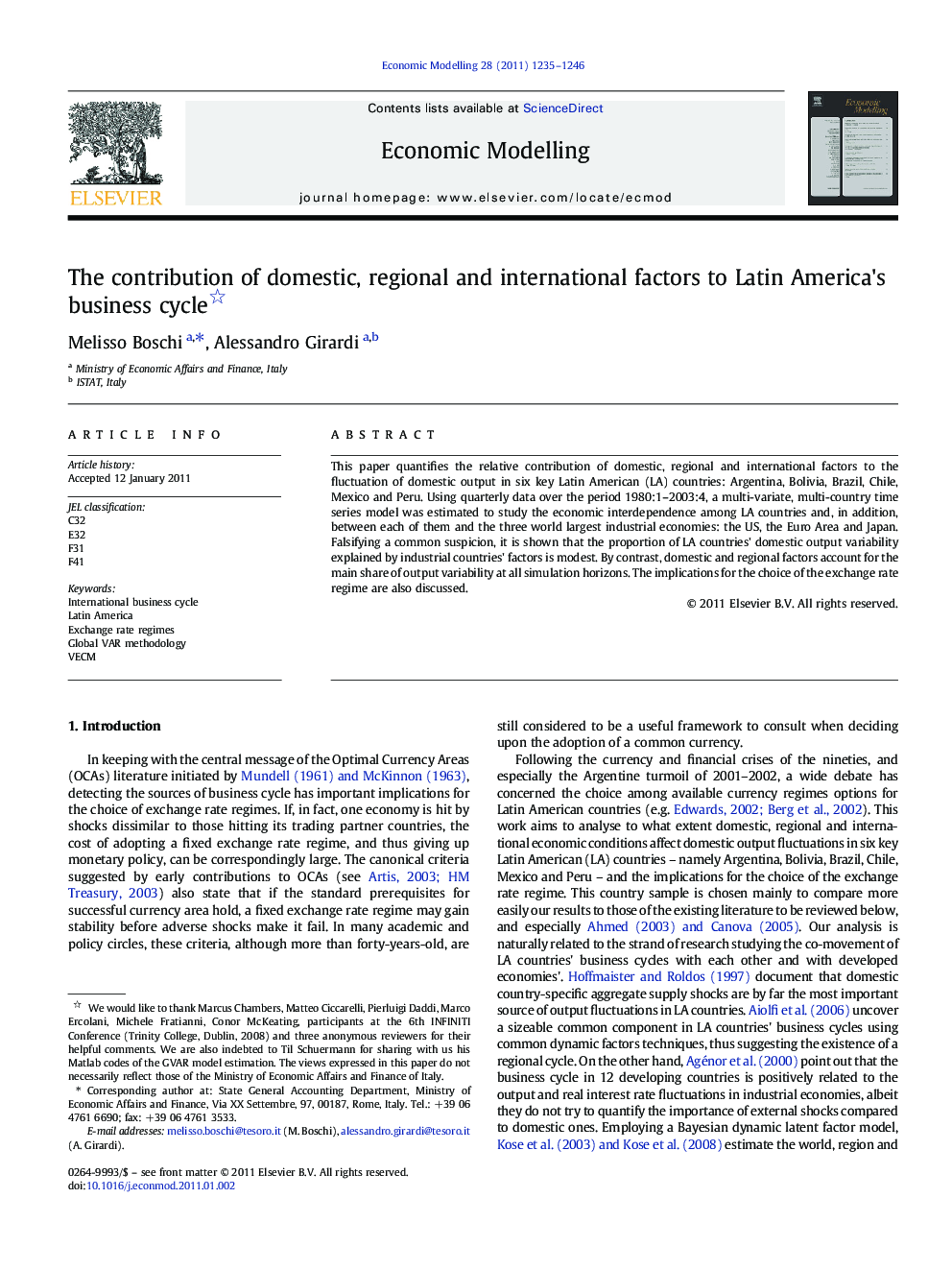| Article ID | Journal | Published Year | Pages | File Type |
|---|---|---|---|---|
| 5055660 | Economic Modelling | 2011 | 12 Pages |
This paper quantifies the relative contribution of domestic, regional and international factors to the fluctuation of domestic output in six key Latin American (LA) countries: Argentina, Bolivia, Brazil, Chile, Mexico and Peru. Using quarterly data over the period 1980:1-2003:4, a multi-variate, multi-country time series model was estimated to study the economic interdependence among LA countries and, in addition, between each of them and the three world largest industrial economies: the US, the Euro Area and Japan. Falsifying a common suspicion, it is shown that the proportion of LA countries' domestic output variability explained by industrial countries' factors is modest. By contrast, domestic and regional factors account for the main share of output variability at all simulation horizons. The implications for the choice of the exchange rate regime are also discussed.
Research highlights⺠Uncovers the geographical sources of Latin American (LA) countries' business cycle. ⺠Identifies shocks according to their geographical origin within a GVAR framework. ⺠LA countries' business cycle response to industrial countries shocks is modest. ⺠Domestic and regional factors are the main sources of output variability. ⺠Implications for the choice of the exchange rate regime in LA countries are discussed.
